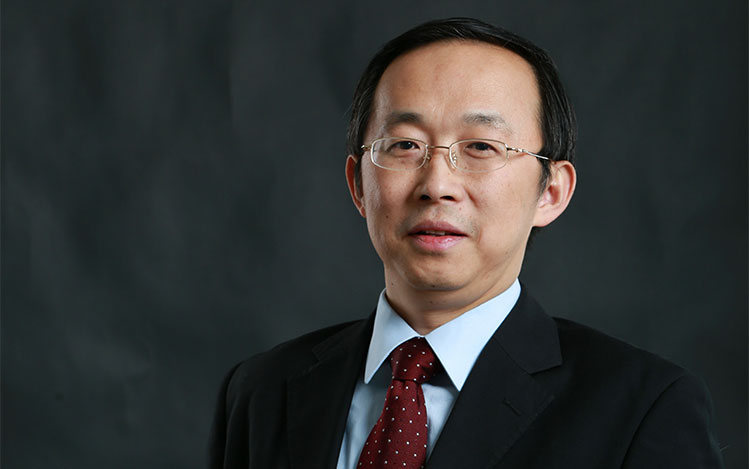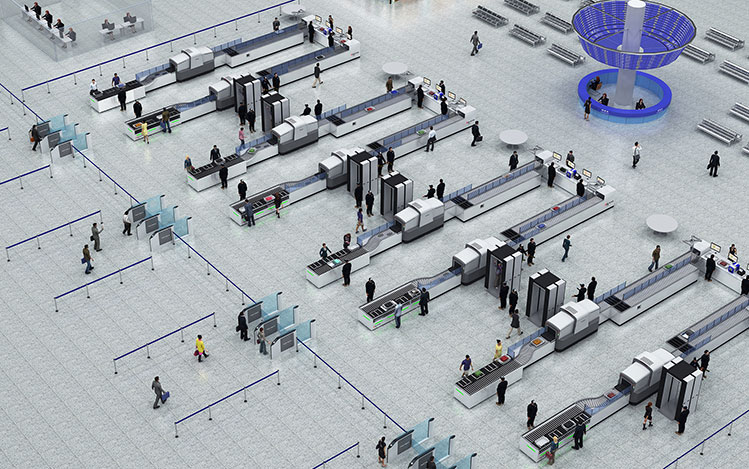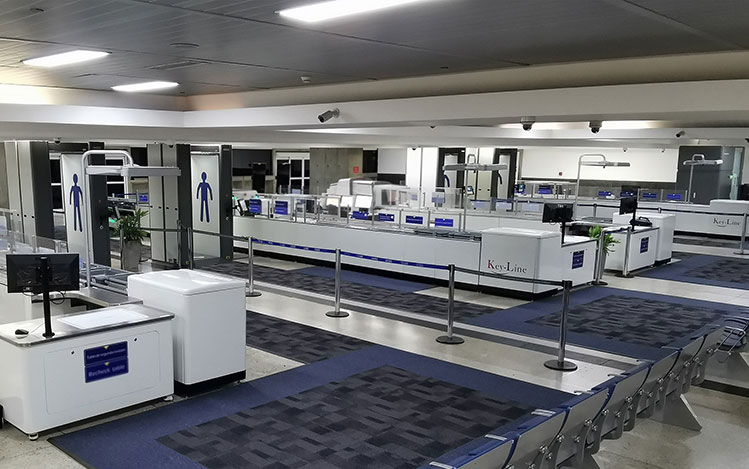
Prof. Zhiqiang Chen, Chairman, President and Chief Executive Officer, NUCTECH: “Myriad advanced technologies, such as Computed Tomography and millimetre wave, have gained increasing momentum in airports around the world. These innovative solutions open new possibilities for airports to strike a balance between security and efficiency.”
An interview with Prof. Zhiqiang Chen from Tsinghua University, Chairman, President and Chief Executive Officer, NUCTECH. By Ross Falconer
The increasing demand for air travel and trade, an evolving threat landscape, and changing passenger expectations, are all contributing to a changing horizon for aviation security.
Blending innovative technologies, streamlined processes and advanced data analytics has the potential to transform aviation security, allowing for the delivery of enhanced security, improved operational efficiency, and better passenger experiences.
“With concerted efforts, we are ushering into a new era of aviation security,” says Prof. Zhiqiang Chen, Chairman, President and Chief Executive Officer, NUCTECH. “Myriad advanced technologies, such as Computed Tomography and millimetre wave, have gained increasing momentum in airports around the world. These innovative solutions open new possibilities for airports to strike a balance between security and efficiency. Contrary to traditional ways, new innovations boost detection capabilities without penalising the airports and passengers with intrusiveness, inconveniences and long queues.”
Significantly, while Computed Tomography (CT) technology is widely used to screen checked baggage, it is now starting to be incorporated into the security checkpoint.
“CT-enabled screening allows for the detection of threats concealed inside complicated electronic devices, or disguised as liquids,” Chen explains. “Thanks to that, passengers are no longer required to remove their computers, iPads, shampoos or perfumes from hand baggage. With less divestures and fewer trays required, the screening process has been greatly simplified and expedited, improving throughput and reducing queues.”
NUCTECH’s Kylin solution for cabin baggage screening utilises dual energy X-ray combined with CT to enable the highest level of molecule and density analysis. Kylin received European Civil Aviation Conference (ECAC) EDS CB Standard C3 approval this spring, opening up significant potential for global expansion.
“The 3-dimensional imaging assists operators in their decision-making,” says Chen. “With richer information available via CT, operators are better assisted to tackle the long-held problem of overlapping and superimposition within bags. With the all-around views and 360-degree manoeuvrability, image analysis is taken to new heights, with more perception than ever before. With the help of automatic target recognition, the application of CT in baggage screening leads to quicker decision-making and sharper insights.”

NUCTECH’s Kylin solution for cabin baggage screening utilises dual energy X-ray combined with Computed Tomography to enable the highest level of molecule and density analysis.
A step-change in people screening
On the people security front, millimetre wave body scanners have gained traction around the world. Chen explains that they provide passengers with more dignity and comfort at checkpoints. “Contrary to pat-downs, millimetre wave body scanners are non-intrusive, 100% safe and secure. They can provide quick screening with high accuracy. With more AI-based algorithms coming, future scanners can be smart enough to allow travellers to keep their belts and jackets on, by omitting all the benign items on your body. The experience could be greatly improved for the passengers.”
Suspicious items are shown on the screen to alert operators for a targeted secondary search. Generic pictures are used to avoid the invasion of privacy. The latest solutions also allow passengers to go through screening in a more relaxed stance, without the need to raise their arms or turn around.
NUCTECH’s millimetre wave body scanner – MW1000AA – is approved by both ECAC and the Civil Aviation Administration of China (CAAC). “Opportunities are abundant within China and around the world,” says Chen. “For NUCTECH, our regulatory-compliant solution could deliver an enhanced passenger experience together with improved security. Because of that, our millimetre wave people screening systems have been well accepted by airports in China, Malaysia, Venezuela, Morocco, and Kazakhstan, for example.”
Meanwhile, real-time screening has significant potential for airports seeking higher throughput and better passenger experience. On the horizon for airports is Terahertz technology, which analyses signals emitted by the human body. “Being passive and secure, it poses no health risks of any kind,” Chen explains. “Terahertz scanners are also capable of covert or overt screening of people on the move. Embedded into walls or floors, security inspection could be implemented so seamlessly that passengers won’t even notice it. The unique strength of Terahertz may lead airport security into a more decentralised pattern. Instead of concentrating all the efforts on a single point, innovations like Terahertz enable airports to distribute the sensors to multiple areas, allowing for quick and frictionless screening before they proceed to the checkpoints. With the advanced inspection, passengers could be differentiated and subjected to targeted security measures at checkpoints, allowing for quick processing of passengers with a low risk level.”
NUCTECH has developed a body scanner utilising non-ionizing Terahertz technology – the TH1800, allowing for real-time screening for concealed threats. “With some trial projects running within China, our Terahertz body scanner has undergone major improvements in terms of its detection capabilities and image quality,” Chen adds.

Blending innovative technologies, streamlined processes and advanced data analytics has the potential to transform aviation security, allowing for the delivery of enhanced security, improved operational efficiency, and better passenger experiences.
Automated and streamlined operations
Streamlined processes can also play an important role in transforming security operations. Automated screening lanes could significantly improve passenger throughput by automating functions previously performed manually, allowing operators to provide more assistance to passengers.
“Motorised conveyor belts draw and return bins automatically, while bins that trigger alarms are automatically diverted to a specific area so bags behind them continue their transition uninterrupted,” says Chen. “By integrating more sensors together, the process can be further streamlined. For example, blending shoe detection with people screening could achieve two goals with one move, alleviating congestion arising from the multi-tasking of the current checkpoint.”

Prof. Zhiqiang Chen, Chairman, President and Chief Executive Officer, NUCTECH: “Contrary to pat-downs, millimetre wave body scanners are non-intrusive, 100% safe and secure. They can provide quick screening with high accuracy.”
AI-propelled data analytics
Beyond innovation in screening technologies and processes, there is also significant progression in data collection and analytics, particularly through Machine Learning and Artificial Intelligence (AI).
“AI is releasing the full potential of security sensors,” Chen comments. “Combined with Automated Target Recognition (ATR) algorithms, CT and millimetre wave body scanners can now detect an ever-expanding list of dangerous, prohibited and contraband items, ranging from explosives to narcotics, firearms, knives, lithium batteries and even packages of drugs or bundles of cash.”
ATR is constantly learning from past experiences to further improve its skill and adapt to new threats. Chen notes that it also opens up the door to more operational efficiencies. “It eliminates the need for passengers to remove electronics and liquids, and holds great promise to free travellers to divest keys, belts and jackets before stepping into body scanners. With ATR recognised more widely as a smart agent, we might see a future where passengers could proceed through checkpoints in a more seamless way, with operators making decisions faster and more accurately.”
Based upon extensive system information, AI can also introduce new capabilities to improve and optimise system operations. Preventative maintenance can take a large amount of information into actionable service schedules, maximising system uptime and optimising the system operations.
With the proliferation of data in checkpoints, security can only be achieved by physical and digital screening. Chen explains that the multiplexing network platform integrates the rich information from all possible sensor nodes, weaving them together to create a whole picture of the traveller.
“Further combined with information from outside sources, like CCTV footage, the Blacklist, AI could greatly enhance the situational awareness of the checkpoints. It enables checkpoints to flex and respond to threats more quickly, differentiate people with their specific risk scores and allocate security resources accordingly. The one-size-fits-all approach would be a thing of the past. It is possible that a unique experience for every individual can be realised in the near future.”







